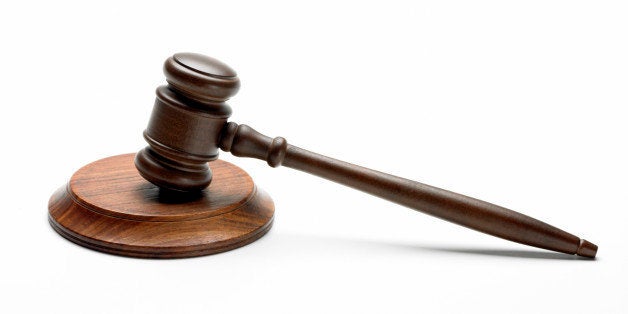
Even before a federal jury in New York found former state Assembly Speaker Sheldon Silver guilty on all seven corruption charges this week, it was clear that the weeks-long trial and its sordid details of how politics really work in New York would resonate well beyond its verdicts.
The New York Times was among those evaluating the fallout, saying that the verdict "... coming at a time when Dean Skelos, the former State Senate majority leader, is also on trial on federal corruption charges, should sound a loud alarm to all the players in Albany who have become so accustomed to the abuse of power that they can't see how it infects every aspect of lawmaking."
Actually, as horrid as that is, the whole story might be even worse.
As the NY Post often notes, Speaker Silver's power went beyond making the laws , and into how the judiciary handled the law itself. During the trial, the Post stressed that "... Jonathan Lippman, his childhood friend, is the state's chief judge. The Speaker also got Arthur Luxenberg, the name-partner at Shelly's old law firm, on a panel that makes judicial appointments. Weitz & Luxenberg [Silver's old firm that paid him for the asbestos referrals that are at the core of the corruption case] specializes in asbestos cases -- and the courts that hear those cases work under rules that favor the firm. Last month, a new judge overseeing those courts demanded reforms."
Look, few observers are going to connect the dots between civil courts and legislative corruption. But the fact is that the big-money part of Silver's indictment boiled down to an oncologist steering asbestos cancer cases to Silver's law firm, which paid him millions for what the mainstream press loved to call "no work" agreements. In the asbestos litigation industry, such referrals are both common and common knowledge - but that's not the case for some legal consumers, who find the practice a bit shady.
That's not great PR for big asbestos firms who can get a majority of their cases from referrals where the original attorney does little or no actual litigation.
Still, some bad New York press would be of little concern for the $10 billion/year asbestos litigation industry - that's as big as the NFL - if it stood alone. The industry's real concern should be that the high-profile case, and the negative spotlight it casts on asbestos litigation, might be a political "tipping point" for the litigation. If Democratic office holders - long the partners of the plaintiff's bar as the Silver case illustrates - start worrying about that connection, then asbestos victims face diminishing options.
Many industry analysts projected asbestos claims would end 10 years ago as victims have painfully passed on. They underestimated the attorneys making those billions of dollars. Now, some believe there could be another 15-20 years of asbestos litigation ahead.
I've noted before that looming changes might leave asbestos cancer victims facing everything from government payback issues to becoming mere perjury pawns. So it is worth repeating the obvious: Most plaintiff lawyers are very transparent and above-board with their clients and cases, and they can also become leaders in research and reform, as is the case with Yellow CSST safety issues.
Asbestos litigation has been going on for 40 years, and has survived plenty of scandals, but the current asbestos context really dates back nearly two years. In January of 2014, a federal bankruptcy judge in North Carolina issued a groundbreaking asbestos-related ruling. Judge George Hodges cited a "startling pattern of misrepresentation" by plaintiff's attorneys and said a company called Garlock, which makes gaskets, was liable for only $125 million of asbestos liability. Lawyers for claimants in that bankruptcy were asking for $1.3 billion. An NPR report said this case offered a look into the "murky" asbestos litigation world.
The ruling was ominous, but so was the fact that share prices for the Garlock parent company, EnPro, jumped some 40%, to $80. Experts said it might rally another 25% if the decision stands past appeal. Garlock didn't stop with the Hodges ruling, instead pursuing a civil racketeering lawsuit against four of the plaintiff's firms involved in the court's discovery and research. Those firms in November countered with a RICO - Racketeer Influenced and Corrupt Organizations - lawsuit of their own.
The RICO suits, illustrate that such actions are becoming the new battlefield for litigation push-back. In the asbestos world, they come in the wake of recent cases including the railroad CSX winning a RICO case that stemmed from West Virginia litigation.
In that case, CSX first won a $7.3 million legal settlement that Bloomberg news said "... vindicates CSX's strategy of using the federal anti-racketeering statute as a weapon to combat corrupt plaintiffs' attorneys.
The initial award was just $429,240.47 but was tripled under RICO provisions, which also allowed CSX to recover attorney fees. Tort reformers hailed it as a "model" for future actions.
With the Silver convictions and with the Garlock cases progressing, what does this mean for asbestos victims?
There has long been an undercurrent that any Big Corporate defendants pushing back too hard on the lawsuits risk very special attention from the plaintiff's bar - you have to wonder, at least in New York, if that urban myth has any street cred post-Silver. You also have to wonder if prosecutors anywhere else are wondering what sorts of dots might become connected.
Startling share price increases, Garlock revelations and a landmark CSX "templates case," coupled with high-profile corruption in our largest city - and you can begin to wonder if 2016 will be even more significant to asbestos litigation than 2015.
Abraham Lincoln once said, "the best way to predict the future is to create it." Will asbestos corporate defendants keep settling to manage risk or fight back against the "bad apples" in the asbestos plaintiff community, and could that mean longer waits for victim's families? Will those victims continue to be shuffled around like pawns? Will the new landscape force a downward spiral in the asbestos money tree for the litigation industry?
At least on those questions, unlike the convicted felonies of Speaker Silver, the jury is still out.
